MYP Madness
McKeon: District desperately pandering for MYP approval
In the middle school’s main hallway, 13 clocks supposedly show the times in cities on six different continents. On Feb. 6, seven of the 13 showed the wrong time. Five were off by one hour, two were off by three.
Let me tell you two stories.
Story No. 1: A few weeks ago, I called the middle school hoping to organize a Shakerite visit to eighth-grade English classrooms; we wanted the rising freshmen to know how to join. (Just a little shameless self-promotion.)
A secretary answered the phone. When I asked for the eighth-grade English department chairperson, a long, awkward pause followed. It was a long, long pause for a simple question.
And then she said it.
“We don’t call it English anymore.”
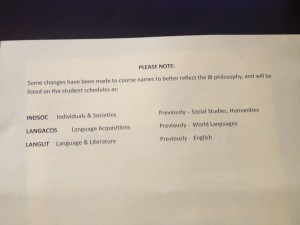
When middle school students received their schedules in the mail in August, included was an inelegantly typeset sheet that displayed only one complete sentence. “Some changes have been made to course names to better reflect the IB philosophy,” it read.
Oh, boy.
For middle school students, English has become “Language & Literature,” written as “LANGLIT” on students’ schedules. Social studies has become “Individuals & Societies,” or “INDSOC,” and world language has become “Language Acquisition,” or “LANGACQS.”
These poor middle schoolers; they’ve memorized Chinese songs, and now they have to learn Newspeak. Can their doublethink at least count for LANGACQS credit?
These changes are motivated by the IB Middle Years Program, which runs from fifth to tenth grade. It is the only phase of IB — Primary Years and Diploma are the other two — for which Shaker has not yet gained IB-approval. (We’ll send our application in October and find out if the IB Gods look favorably upon us in spring 2015.)
At this point, there is no going back: Shaker will be a K-12, bonafide IB district. The last piece we need is MYP approval. To get there, we pander. At the middle school, we’ve changed class names and hung flags, murals, learner profiles and clocks in the halls.
Middle School MYP Coordinator Dexter Lindsey wrote in an email interview that part of his job is to help “integrate the visual elements of IB within the middle school.” He wrote, “The purpose [is] not to make IB approve our MYP program.”
“The purpose is to provide visual cues and reminders to our students and visitors of our beliefs in the core principles of IB,” he wrote. “All aspects of the learning environment are important as they impact and inform students, staff and visitors. The wall spaces in any school or classrooms are perfect locations for supplemental learning materials, messages, and important information.”

Which brings me to story No. 2: In the middle school’s main hallway, there are 13 adjacent clocks purportedly showing the times in 13 world cities on six different continents. When I visited the middle school Feb. 6, though, the times displayed on seven of the 13 clocks were wrong; that is, a majority of the clocks were incorrect. Five were off by one hour; two of them — sorry Jerusalem and Mexico City — were off by three. So they’re props, not clocks.
The district’s desire for MYP approval was no doubt a contributing factor in Superintendent Gregory C. Hutchings’ hiring. At his first public interaction with Shaker faculty and residents, on March 14, 2013, he said he wrote “the only actual dissertation in the country on teacher efficacy in IB MYP in an urban school district.”
To be sure, the middle school needs help. It’s no coincidence that Hutchings’ first major policy change was ending social promotion, the policy that let middle school students progress to the next grade despite failing one or more classes. It was his first — and, surely, not his last — attempt at fixing the middle school.

And it needs fixing. Last August, when Ohio released report cards for public schools, the middle school received three F’s, whereas none of the other seven schools received more than one.
Its reputation precedes it, and some parents pull their kids out after sixth grade; part of Hutchings’ 90-day plan was to meet with “Shaker parents who send their children to private schools to hear their perspectives of the district.”
And, perhaps its most infamous quality, the middle school has a behavior problem. As I touched on last week, the middle school had 18 incidents of “harassment, intimidation and/or bullying leading to a suspension or expulsion” in the first 17 weeks of school. For comparison, Woodbury had five; the high school, three.
When you hear “middle school,” though, you don’t think of the ugly numbers, you think of the memories. I remember when Mr. Sears dressed up as bedsheet Socrates to teach us Greek history and when Ms. Roth used Starbursts to help us understand debtors’ prison. We grew outside the classroom, too; in those two years, I began to understand diversity’s limits as I saw my classmates self-segregate, and I developed my first strong, meaningful friendships.
But as I walk around the middle school, I don’t think about concrete, constructive policy initiatives like Hutchings’ on social promotion. And I don’t reminisce about my time there. I’m struck by the IB-indoctrination that preoccupies this school.

It’s embarrassing that we seem completely at the mercy of some bureaucrats 5,000 miles away, and that we’re so desperate for IB certification that we’ll: change course names, swap social studies class time for Mandarin Chinese songs, demand teachers endure hours of IB training, have sophomores complete a mandatory (but not mandatory) Personal Project, expect teachers to teach both the AP and IB curriculum in the same class and hang flags and clocks and globes and learner profiles around our schools.
Shaker seems phony and powerless when we pander. And I’m not proud of my district when it looks phony and powerless.
I have no problem with the “the core principles of IB.” Really! With or without them, teachers will change students’ lives, inspiring them to “take ownership of their learning” and be “lifelong learners.” But I stress: It’s teachers that do that. Not flags or clocks or learner profiles. Teachers. A strong, well-rounded curriculum can help, but it’s teachers who ultimately create “lifelong learners.”
Maybe MYP approval will help teachers do that. I hope it does.
It would just be nice to retain some integrity getting there.

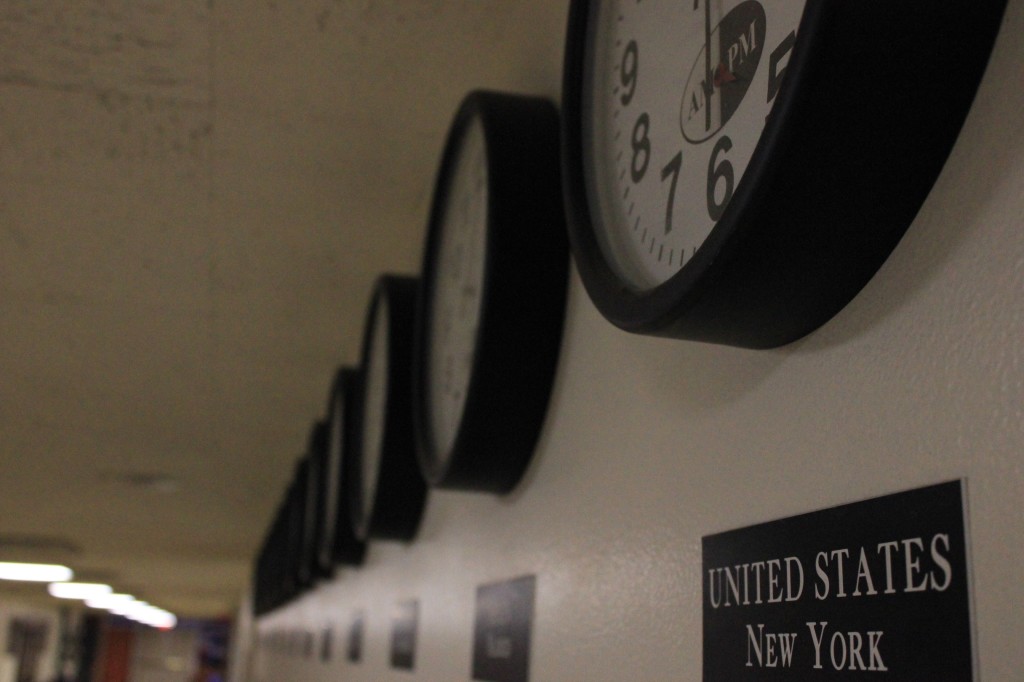
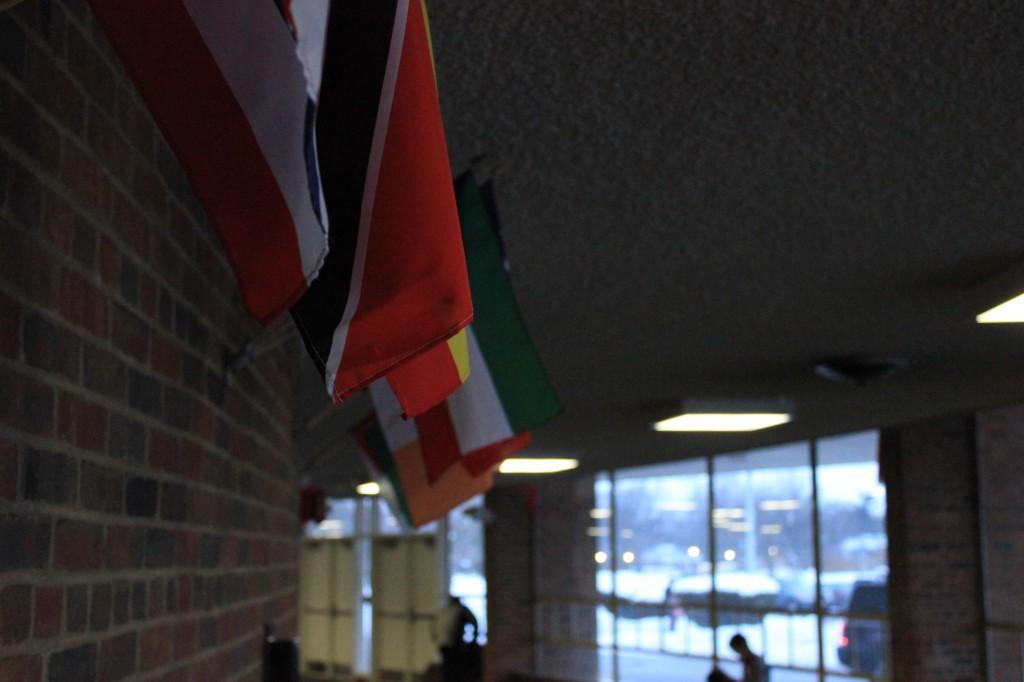

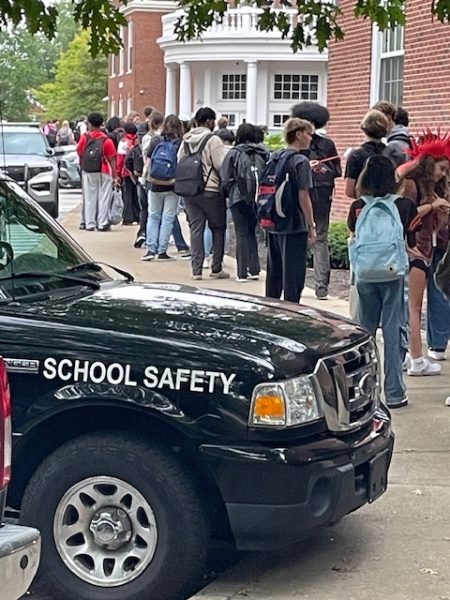
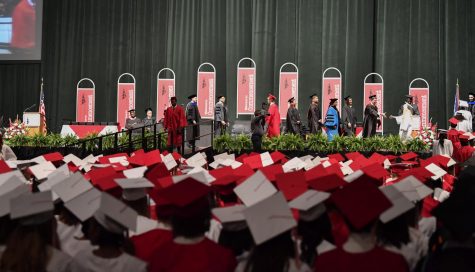
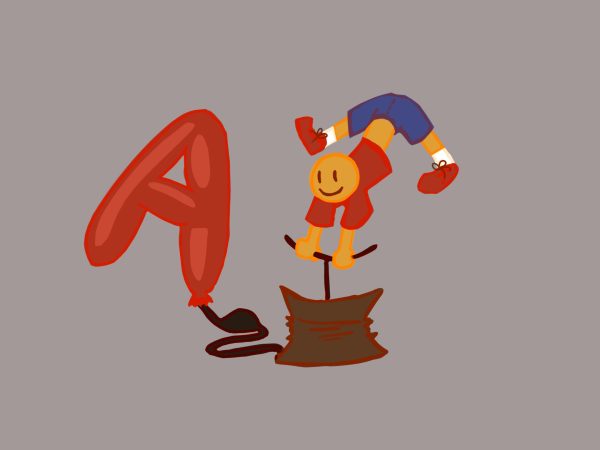
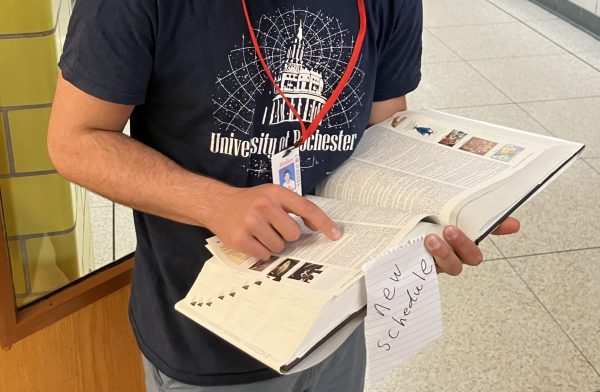
Suzanne Graham | Feb 12, 2014 at 3:00 pm
I appreciate that a student is writing about this very important topic, but more information and perspective is needed to formulate an accurate opinion of the IB initiative. Incorrect clocks and murals do not encompass the breadth of the initiative. They need attention, so be it. The real conversation at hand is much deeper than anecdotes. Shaker is built on a foundation of excellence in education. While I agree that teachers in Shaker are dynamic, dedicated, and impactful, I disagree with the idea that the uniquely high tax structure should fund status quo or lower performance. Looking nationally, and yes, internationally, IB programming is recognized as a characteristic of excellence. Shaker graduates should have access to that excellence. Concerns with Middle School performance run deeper and longer than MYP. There is a systemic issue at hand that will require vision, diligence, and discipline to navigate the staff and students through the transition. Transitions are not comfortable, but neither is heavily supporting a district with falling performance. Perhaps there is room to drop the anecdotal signs of an IB program, but there is not room for failing behind international best practices. Critical thinking, appreciation of diversity, problem solving, and pursuit of knowledge motivated by the human spirit, not grades, are what will make my children successful, useful citizens. It is the responsibility of the district to research and implement the best strategy to get children, and their teachers, to that level of excellence. For certain there is a lot of work and some trial and error ahead. This is no doubt complicated by core curriculum, standardized testing, and evaluation changes of which the district has no control. IB is something that can help elevate our system to the performance level it once retained, making Shaker the district it is today. Today is not a time to rest on laurels. Avoiding the diligent work necessary or hiding behind nostalgic perceptions of education in an ever-evolving, competitive environment will not get students ready to succeed outside of academia. What is needed to work together to implement this program in a way that is meaningful and impactful?
Susan Vodrey | Feb 10, 2014 at 5:19 pm
Thank you for focusing attention on the MYP approval process in Shaker. From my observations as a parent, the PYP was implemented with integrity and improved the curricula in Shaker elementary schools. However, I’ve seen firsthand how superficially MYP is being layered on top of the existing curricula at Woodbury and SMS. PYP is designed to end in fifth grade, but because we have K-4 buildings, Shaker has decided that fifth grade will be a “zero year” for IB. One of the biggest challenges of MYP implementation in Shaker is that it spans three schools—Woodbury, SMS, and SHHS. These schools aren’t used to developing curricula together. For example, when world languages were added to the 6th grade at Woodbury, it didn’t affect the 7th grade language courses at SMS. I applaud The Shakerite for beginning this discussion.
Ryan LaMonica | Feb 9, 2014 at 3:20 pm
Ezra makes a great point speaking to the implementation of the IB Programme; however, I believe half the problem with IB in the Shaker Heights School District is, in fact, the essence of the program itself. The International Baccalaureate Program was created as the “next tier” in global education, as a way to pull education into a modern life in which we can communicate with people on the other side of the world within seconds. Because of the world we live in today, with much greater accessibility to other cultures, it is vital that students learn and grow with an understand and tolerance of all the world’s cultures. I am content with Shane’s belief in the IB system, and that gives me hope. But here is the problem:
IB is about becoming educated in the what the world has to offer and what PEOPLE have to offer. This does not come in the form of teaching Mandarin Chinese songs to students during entire class periods. This does not come by letting students know what the current time is in Sydney, Australia (If the clock even reflects the correct hour). Nor does this come in the form of educating the student body on the flags of the world strung along the walls.
Education, in the sense of worldly tolerance, comes in the form of understanding and a passion for “lifelong learning.” It is this very principle on which the IB Programme is based. Ezra mentioned “critical thinking and interdisciplinary synthesis,” which is embodied in the overarching theme of understanding. In my experience as a life-long student in the Shaker Heights School District, my teachers have pushed me to discover not only a love for learning, but a love for understanding other people and cultures. It is a teacher’s passion for that which they teach his or her students, not a truckload of superficial IB memorabilia and/or blinding hallway mosaics, that allow Shaker students to enter the world ready to take on any challenge. Students are teachers’ canvasses; our beautiful schools are not IB’s canvasses. This is what sets Shaker apart from other districts (in addition to our incredible spectrum of people), and what needs to be incorporated into the implementation of IB. The International Baccalaureate Programme has the potential to change the course of Shaker students as they graduate into the world, but unless we start seeing changes in the classrooms, lessening the burden placed on our hardworking teachers, and find a way to make this new system work IN SHAKER HEIGHTS, I will remain skeptical of the reputation of success that precedes the IB Programme.
Robert Clegg | Feb 9, 2014 at 12:56 pm
The student is the “customer”. School systems are paid by student performance (if students don’t pass the tests, they lose funding). If you really want more control and input into how you are educated, take a lesson from the teacher’s union; go on strike. By refusing to take the tests you cut the funding supply. Then you have the Power to negotiate. Otherwise, you are just a student with some good ideas … follow the money.
Now you know where the power is. Do you dare take control?
Leo Izen | Feb 9, 2014 at 2:17 am
I can’t believe they raised flags everywhere in the building, except during the meeting on renaming Social Studies to “INDSOC.” How could you possibly rename a class “INDSOC” without invoking images of a bureaucratic administration attempting to cover its faults by employing public relations gimmicks rather than fixing its problems?
Irene Meyerhoefer | Feb 8, 2014 at 6:33 pm
Bravo Shakerite! My sentiments exactly! Teachers missing from class for IB training or meetings also seems to occur often. I don’t think substitutes provide the best learning environment. The Middle Schoolers need their teachers in their classrooms! It is the teachers that make the difference not some standards imposed by IB.
Ezra Zigmond | Feb 8, 2014 at 5:22 pm
The problem seems not to be with IB itself, but rather with how the district has chosen to implement IB. IB is supposed to be about critical thinking and interdisciplinary synthesis. But the very ideas that the programme so impressive are considered less important than our obsession to create “global citizens.” This is an admirable goal, but it cannot take precedence over basic education. If the district wants its IB programmes to be taken seriously, it should present them as the rigorous, innovative curricula that they were designed to be. When flags, learner profiles, jargon, and yoga are the symbols of IB at Shaker, it appears as though the district is marginalizing academics.